Here is FlatpanelsHD's first and exclusive look at Sony's 2022 TVs including the company's first QD-OLED TV, first miniLED LCD TV, and other models and new features.
Sony TVs in 2022
Sony will expand its line-up with the first QD-OLED TV based on Samsung Display's QD-OLED panel. It will be known as A95K and it is Sony's new flagship 4K TV. Sony will also launch its first 42-inch OLED TV as A90K that can be considered an extension of last year's A90J, which will carry over into 2022. More details here.
The Japanese company will also launch its first miniLED LCD TVs: X95K with 4K resolution and Z9K with 8K resolution, whereas X90K and below are more comparable to last year's models. More details here.
Sony will unveil a couple more LCD and OLED TV models probably in February, so stay tuned or sign up to FlatpanelsHD's newsletter here.
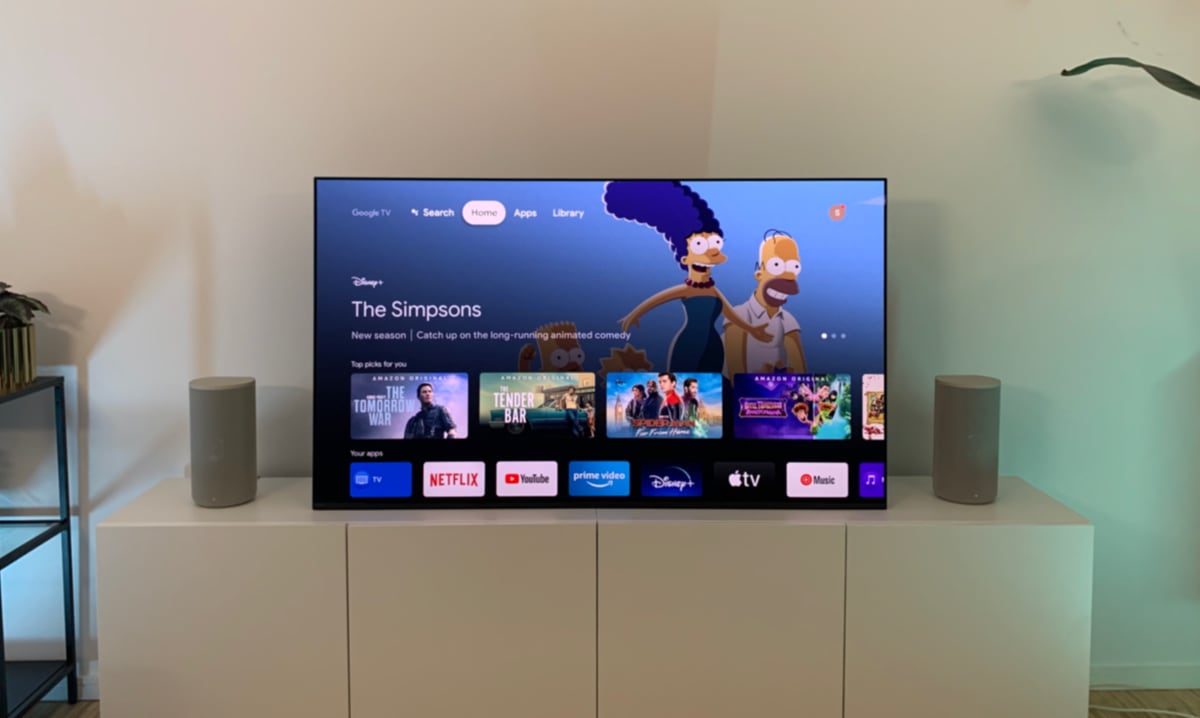
Sony A95K QD-OLED with Google TV. Photo: FlatpanelsHD
We are looking at Google TVs with a new simplified remote control – more on that later. The high-end models are powered by Sony's XR Cognitive Processor and although the name remains unchanged the 2022 processor has learned a few new tricks.
Sony pulled out of CES 2022 due to covid concerns but FlatpanelsHD had an exclusive chance to see and try the company's 2022 models, specifically the A95K QD-OLED, X95K miniLED LCD, and X90K LCD.
The presentation was arranged by Sony and FlatpanelsHD was allowed to take photographs and use the products but not measure display characteristics, install apps, or otherwise test the TVs as these were early hand-assembled pre-production samples.
Hands-on with Sony QD-OLED
We were most excited to see the Sony A95K, especially after seeing Samsung Display's QD-OLED panels and Samsung Electronics' QD-OLED TV. We consider QD-OLED the next step for display technology and Sony's A95K did not disappoint.
A95K is an elegant TV with a thin bezel and a very heavy, flat tabletop stand that can be placed behind the TV (to hide the stand and make the TV lean back slightly) or in front of the TV (to make the TV stand up straight). Like most OLED TVs, A95K is fitted with a rather large electronics box and the upper part is not particularly thin either. What you see at the top is a cutout socket for Sony's optional camera.
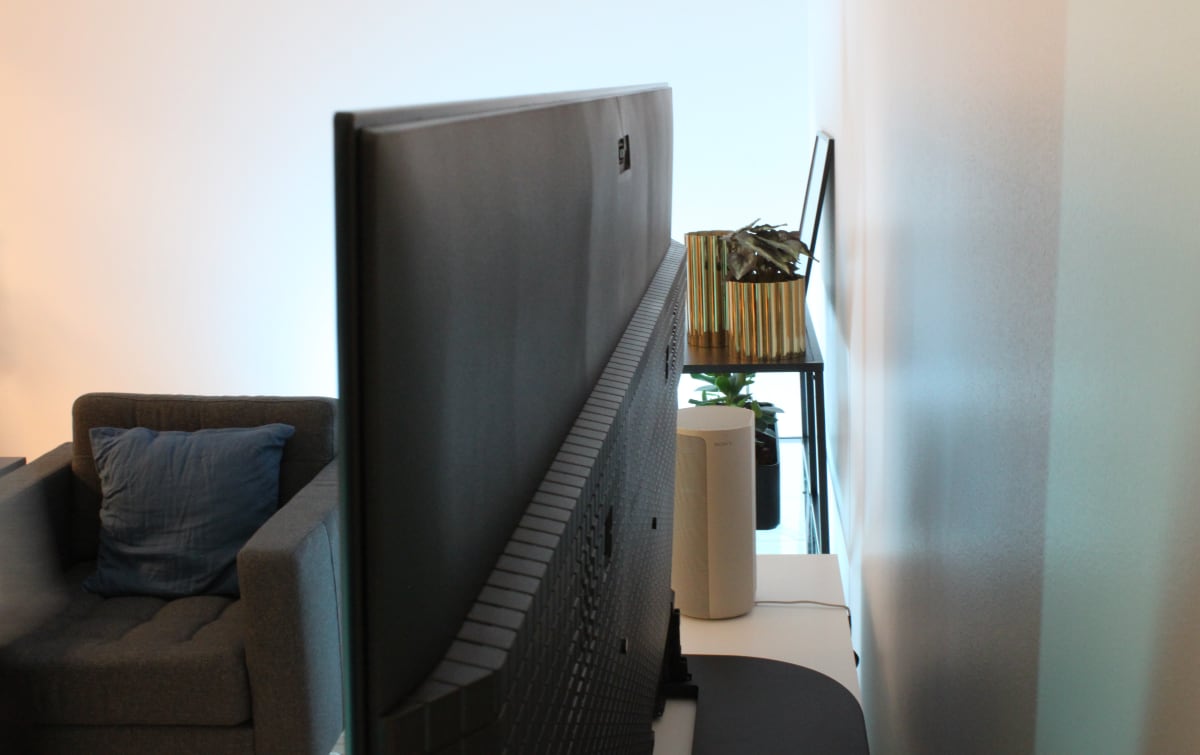
Sony A95K QD-OLED TV. Photo: FlatpanelsHD
Picture quality is excellent. A95K has all of the QD-OLED characteristics that we have previously detailed. Very deep blacks, higher brightness than regular OLED TVs, pure and saturated colors even at high luminance levels, and more or less perfect viewing angles. Pixel-level luminance and color control together with deep blacks is the combination that creates those wonderful pictures on OLED TVs, and it is taken even further on QD-OLED.
Also read: First look: QD-OLED displays
In one demonstration Sony compared the A95K QD-OLED TV to last year's A90J OLED TV, which is one of best TVs on the market today. Sony had initially set both TVs to Vivid mode to demonstrate QD-OLED's higher overall brightness, higher peak brightness, and better color saturation (for higher Rec.2020 color gamut coverage). There is not much new to add here. Vivid mode is not a good starting point but it is meant to show that QD-OLED has advantages over WOLED in brightness and color, said Sony.
Photos below are mainly to show you the setup, don't form conclusions based on them.
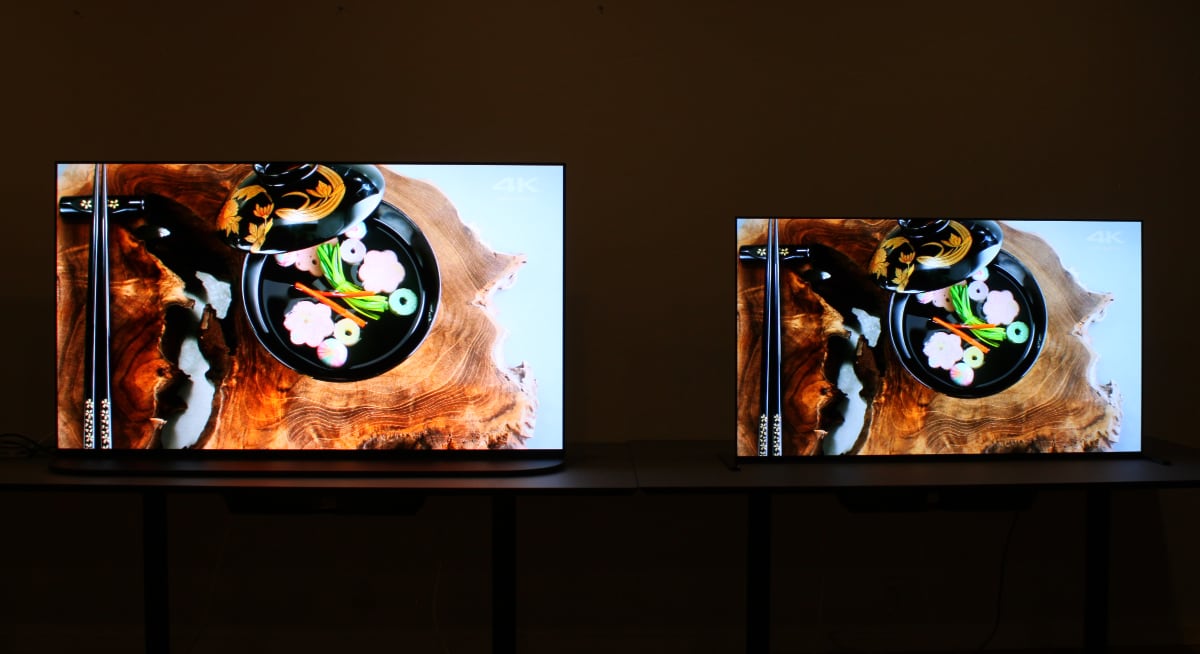
Sony A95K QD-OLED TV (left) and Sony A90J OLED TV (right), both in Vidid mode. Photo: FlatpanelsHD
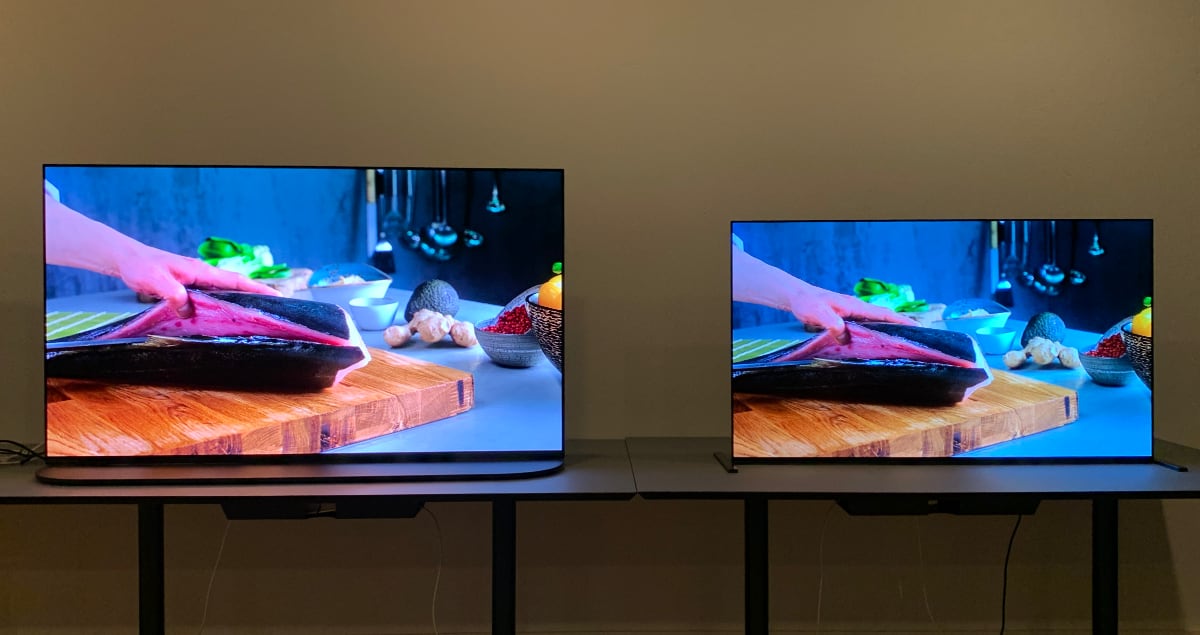
Sony A95K QD-OLED TV (left) and Sony A90J OLED TV (right), both in Vidid mode. Photo: FlatpanelsHD
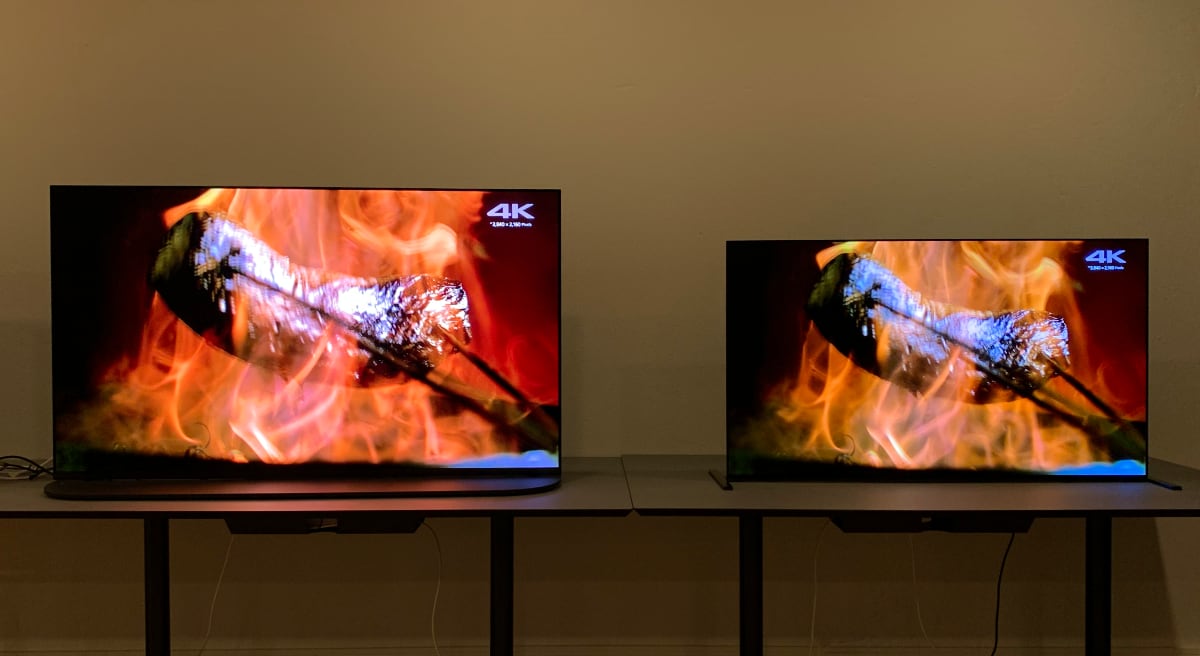
Sony A95K QD-OLED TV (left) and Sony A90J OLED TV (right), both in Vidid mode. Photo: FlatpanelsHD
For the next demonstration, Sony had both A95K and A90J running in a manually calibrated picture mode.
Comparing the two screens with 4K SDR content revealed no relevant differences to speak of, which is hardly surprising with the two screens operating in standard dynamic range, i.e. Rec.709 color gamut and lower peak brightness. With 4K HDR content, we observed some differences with A95K delivering more saturated colors in some scenes. It also had more headroom in brightness. However, the differences were subtle in the video clips we saw – A90J is already an excellent OLED TV.

Sony A95K QD-OLED TV (left) and Sony A90J OLED TV (right), both calibrated. Photo: FlatpanelsHD
A more interesting observation happened after 10-15 minutes of talking to Sony's representatives towards the end of our presentation. A95K and A90J were left idle in the Google TV menus and after a while A90J initiated its dimming algorithm to reduce the risk of burn-in. A95K remained bright and alive. I pointed out the difference which surprised even the Sony representatives – they had received the sample only a few days before. It is not as evident from the photo as it was standing there but it could suggest that the QD-OLED panel employs a less aggressive anti-burn-in dimming algorithm for static images or gaming content with a map, HUD etc. We did not have time to investigate further but we will examine this aspect more in-depth once we get our hands on a review sample.

The Sony A95K QD-OLED (left) did not dim but Sony A90J OLED TV (right) did. Photo: FlatpanelsHD
Sony has applied its 'Acoustic Surface' actuator-based speaker technology to A95K so using the actual OLED panel as speakers obviously works with Samsung Display's QD-OLED panel too. We heard in action and to our ears it sounded quite similar to previous Sony OLED TVs, meaning sound is coming directly from the picture aided by two small built-in subwoofers. If you want more oomph you use the 'Acoustic Center Sync' system to pair the TV to a Sony soundbar and still use the TV's speakers as the center channel.
How much will QD-OLED cost? The only indication that Sony gave us is that the $8000 figure that is floating around on the web is not accurate.
A95K will launch in 55- and 65-inches only as these are the only panel sizes Samsung Display will mass-produce initially. That is a shame because enthusiasts who are looking for the best of the best will often want something larger than 65 inches. Maybe next year.
A90K was not on display but Sony was eager to point out that its first 42-inch OLED TV, together with the 48-inch A90K, are fully equipped "gaming TVs" with HDMI 2.1 bandwidth, VRR, and the 'Perfect for PlayStation 5' features. However, they only have two HDMI 2.1 ports (only Z9K has three HDMI 2.1 ports). VRR did not work in any of the pre-production samples – and unsurprisingly Sony did not have an Xbox Series X console available either – but VRR will work in the 2022 models from launch, the company confirmed at CES. We are of course also still waiting for Sony to release the VRR update for PlayStation 5 and the company did not provide any update on timing.
Sony's more affordable A80K OLED TV was on display but unfortunately not working.
Hands-on with Sony miniLED LCD
On display were also the Sony X95K (miniLED FALD LCD) and X90K (LED FALD LCD) models, placed side-by-side for comparison. Sony did not reveal the exact number of dimming zones in X95K. It has been rumored to be over 100 but less than 1000, which looked about right judging from the demonstrations.
Once again, Sony's first demonstration was carried out in Vivid mode to demonstrate X95K's capabilities in terms of brightness and color. It was clear to everyone that X95K can reach significantly higher brightness and somewhat better color saturation than X90K. It also delivers better contrast in most scenes. X90K looks more like a continuation of last year's X90J in terms of display hardware, meaning that it has the same limitations especially with HDR content, whereas X95K is a closer match to Samsung's "Neo QLED" miniLED LCD TVs.
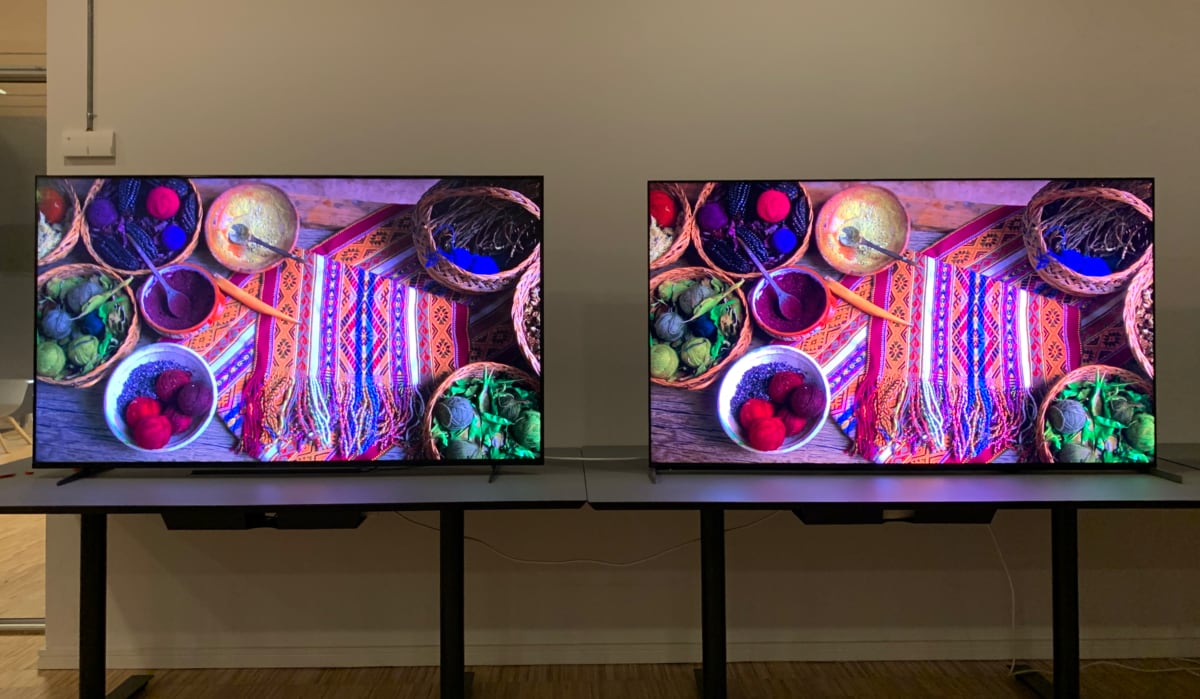
Sony X90K LCD TV (left) and Sony X95K miniLED LCD TV (right), both in Vidid mode. Photo: FlatpanelsHD

Sony X90K LCD TV (left) and Sony X95K miniLED LCD TV (right), both in Vidid mode. Photo: FlatpanelsHD
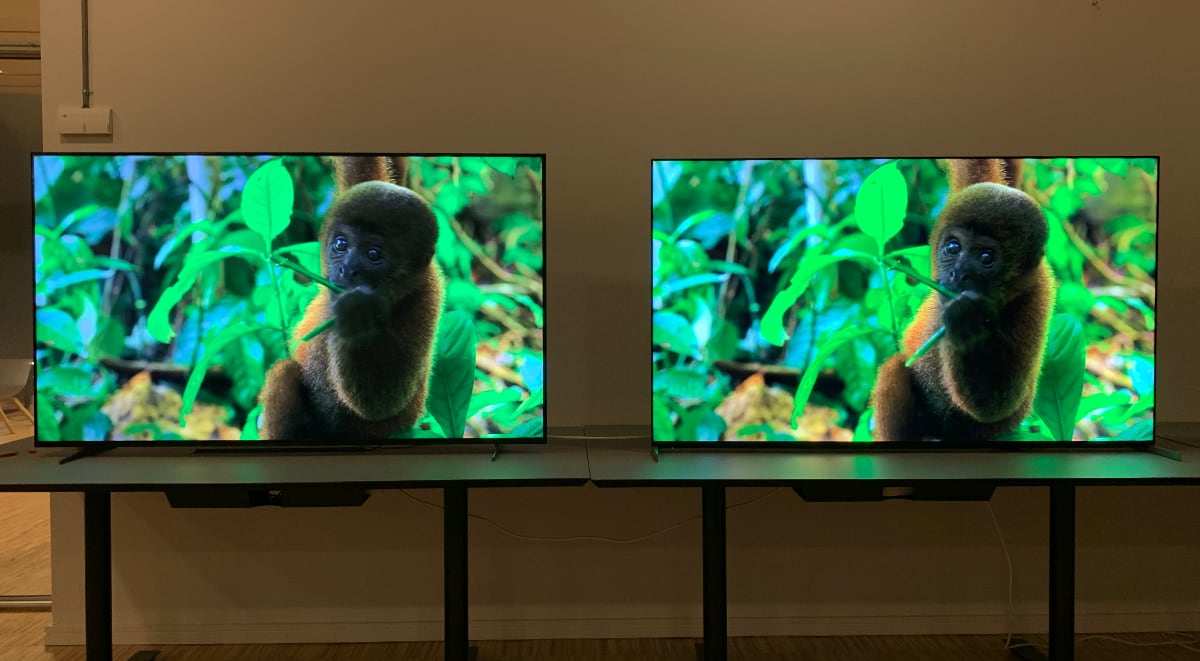
Sony X90K LCD TV (left) and Sony X95K miniLED LCD TV (right), both in Vidid mode. Photo: FlatpanelsHD
The second demo had the TVs running in the out-of-box Custom picture mode. X95K still had obvious advantages over X90K with HDR content, but it is not because X95K sets new standards for LCD TVs – it does not – but rather that X90K has many of the same limitations that we pointed out last year in our review of X90J.
Sony's QD-OLED TV was standing next to it and for the most part X95K did not come close to matching any of the OLED TVs in picture quality. Its main advantage is fullscreen brightness (which most likely comes with higher energy consumption) but in all other movie and game scenes it must surrender to the OLED TVs. It is worth pointing out that higher fullscreen brightness looks more relevant in a side-by-side comparison because your pupils always immediately set their light sensitivity to match the brightest screen as opposed to a living room where you only have one TV – to which your pupils will adjust.
Sony has touted its miniLED dimming algorithm as being capable of reducing blooming while maintaining high peak brightness – a tall order – and while bright screens look balanced, high-contrast scenes still cause significant blooming that was actually more visually distracting than on X90K due to the higher light intensity and more defined range of the halo – we saw much the same thing on Samsung's "Neo QLED" miniLED LCD.
We only spent an hour or so with X95K but spotted blooming artefacts on several occasions. This should not come as a surprise considering that it has less than 1000 zones as we see the same thing even on LCD TVs with several thousand dimming zones. It's a physical limitations; each dimming zone covers thousands or tens of thousands of pixels.
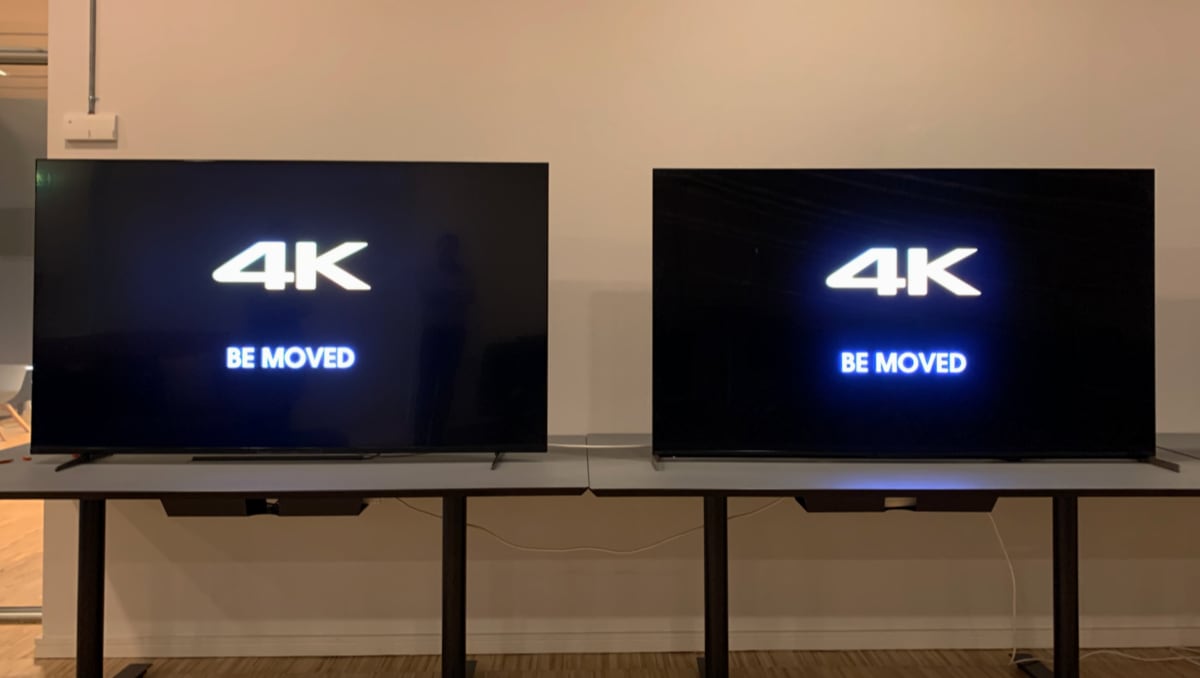
Sony X90K LCD TV (left) and Sony X95K miniLED LCD TV (right). Photo: FlatpanelsHD
Based on what we saw X95K is a significantly better LCD TV than X90K but to make it relevant in the market it must, in our opinion, be cheaper than any of Sony's OLED TVs in every size class. It may sound harsh but with OLED TVs in the market this is the reality for high-end LCD TVs, and with QD-OLED TVs entering the mix in 2022 and 2023 it can be hard to see a bright future for LCD TVs.
Sony's Z9K 8K LCD TV was not on display and we did not get a chance to see the mid-range X85K either. Sony could not confirm if Z9K finally supports YouTube 8K (via AV1) but they will get back to us with answer to our follow-up questions.

Sony X95K miniLED LCD TV. Photo: FlatpanelsHD
Google TV, new remote controls
Sony has not one but actually two new remote controls in 2022; one with a black plastic top cover (X80K and up) and a premium version with an aluminum top cover (A90K and up, X95K and up). It is smaller and has fewer buttons (25 vs. 49 last year).
We are thrilled to see Sony make efforts to simplify operation even though we would have preferred them to reduce the button count further and to remove the sponsored buttons – we are counting at least 10 redundant buttons. Since only high-end models offer the Bravia Core streaming service, the plastic remote has a YouTube button instead.
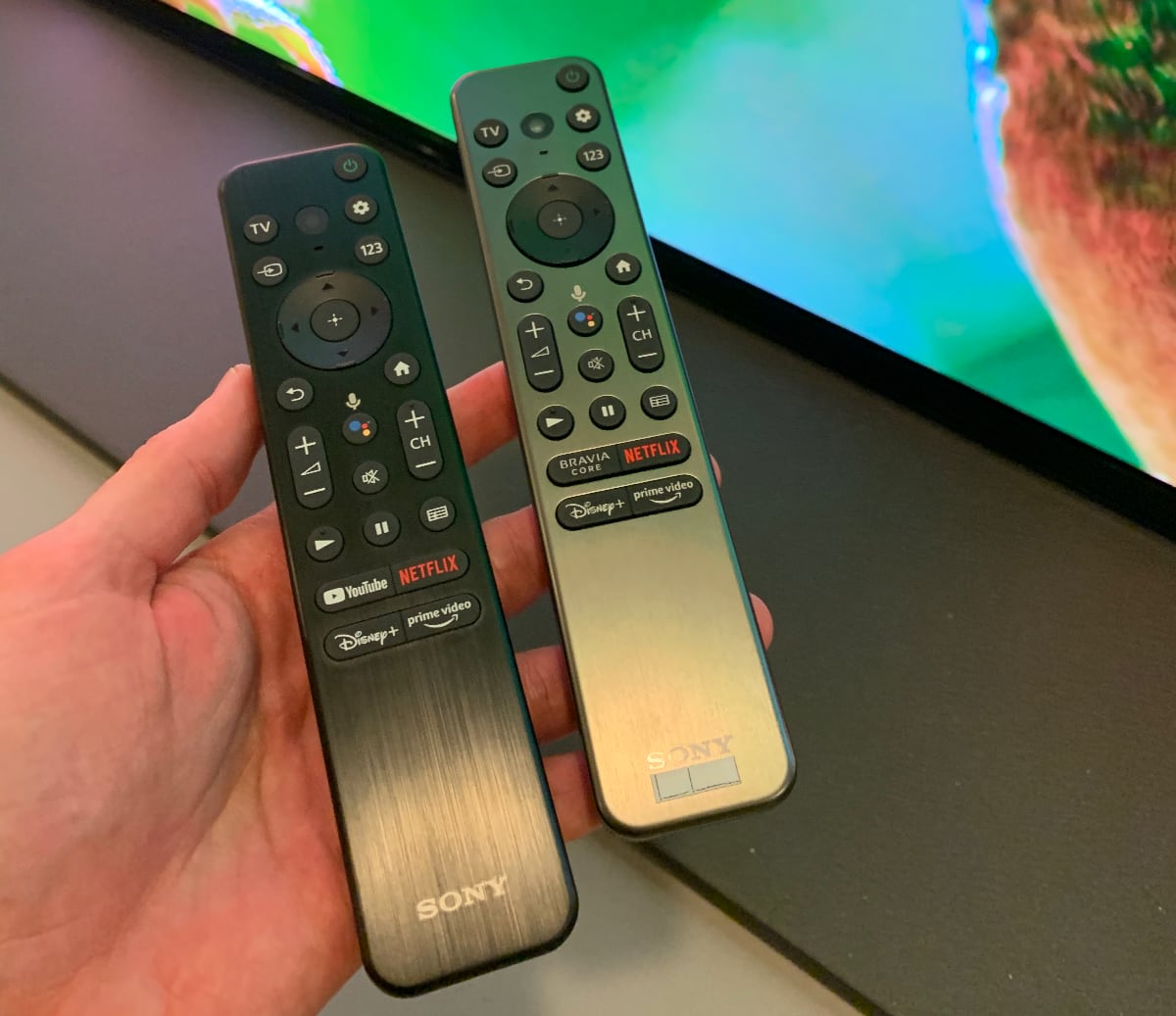
Sony's two new remote controls for 2022 TVs. Photo: FlatpanelsHD
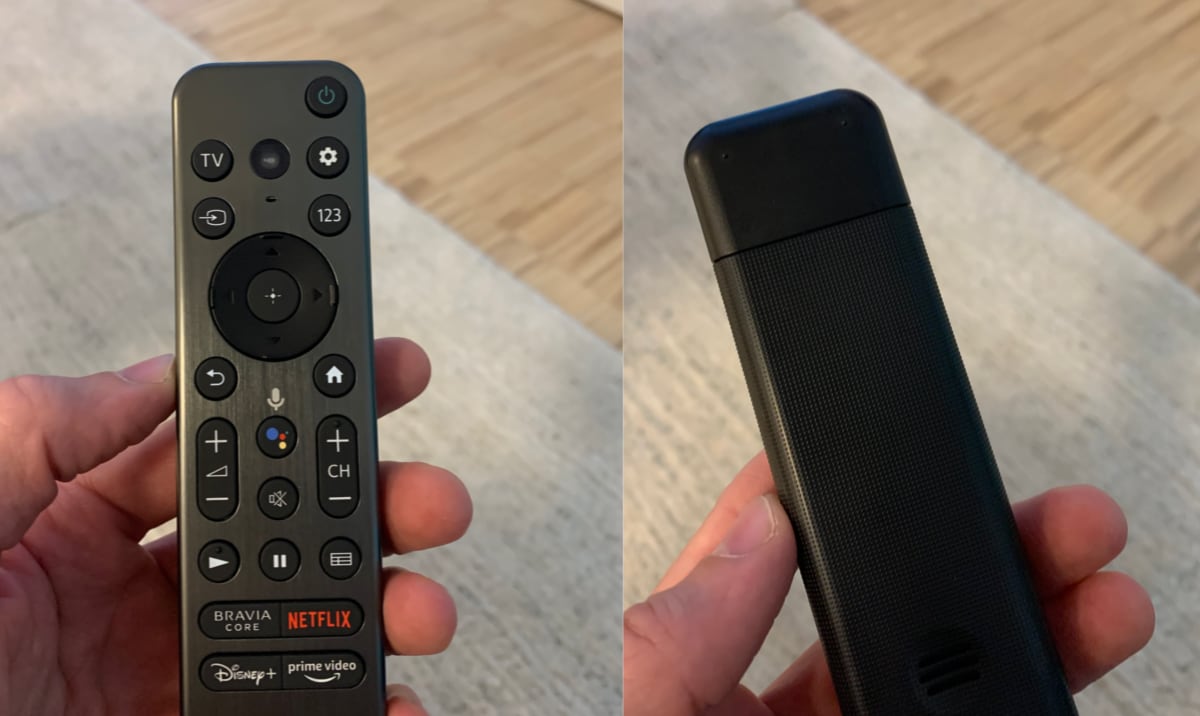
Sony's new remote controls for 2022 TVs. Photo: FlatpanelsHD
Speaking of Bravia Core, which was launched last spring with Sony's 2021 models as a streaming service offering Sony Pictures movies in "up to 80 Mbps" bitrates, you get free premiere movies and free access to the catalog for 12 or 24 months (depending on which TV model you buy). So what happens after that? Pressed for an answer, Sony remained mum on the matter and would only say that there are no plans to abandon Bravia Core. Let's see what happens later this year.
Sony's 2022 TVs come with Google TV pre-installed and we confirmed in the menus that they are still running Android 10, which is the Android version Sony intends to ship them with. We could not get Sony to comment on its plans for OS updates.
The company did not reveal any new UHD Blu-ray players at CES 2022 and that is because existing models will carry over into 2022, Sony confirmed to FlatpanelsHD.
That's all for now, folks. Look forward to more coverage on FlatpanelsHD soon.

Sony A90J (background), Sony X95K (middle), Sony X95K (foreground). Photo: FlatpanelsHD
Sony 2022 TVs – specifications
FlatpanelsHD